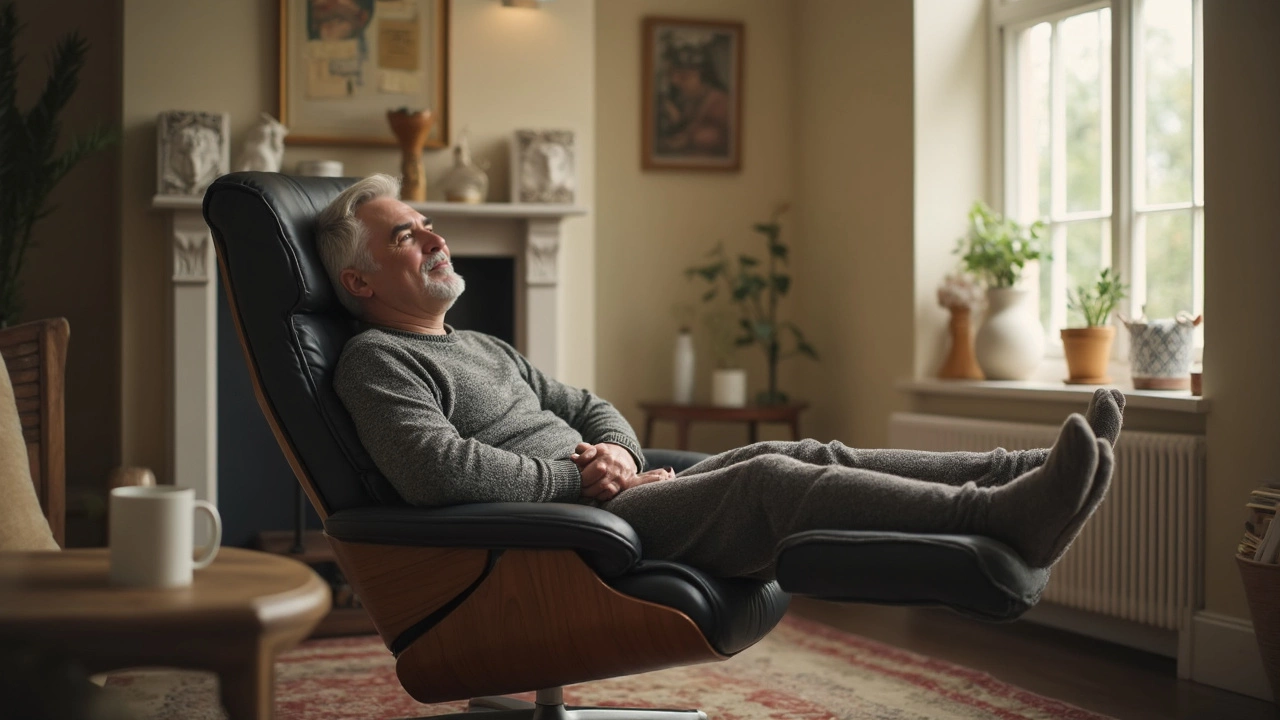Comfort Tips to Boost Everyday Relaxation
Feeling a little stiff on the couch? Maybe it’s not you – it could be the way you’ve set up your space. Small changes to how you use and care for your furniture can turn a plain room into a chill zone. Below are simple, hands‑on ideas you can try today.
Pick the Right Materials for Long‑Term Ease
When you shop for a sofa or a chair, think about the skin‑feel and how it ages. Leather gets softer with use, but it can get sticky in hot rooms. A high‑density foam cushion holds its shape longer than a feather fill, especially if kids or pets jump on it. If you love a rustic look, a hardwood frame with a fabric slipcover gives you durability while staying easy to clean.
For bedroom furniture, a solid wood nightstand paired with a mattress‑friendly platform keeps the room steady. Avoid cheap particle board that squeaks after a few months – a little extra spend now saves you from noisy nights later.
Arrange Furniture for Natural Comfort
How far your sofa sits from the TV matters. A good rule of thumb is to measure the TV’s diagonal, multiply by 1.5, and use that number for the viewing distance. This keeps your eyes relaxed and prevents neck strain.
Corner sofas often become the family hub. Place the biggest cushion where the longest back meets the corner, then add two smaller throws on each side. This layout lets people lean in without feeling cramped.
Don’t forget the floor. A low‑pile rug under a coffee table adds a soft surface for feet, but make sure the rug is at least 20 cm larger than the table on all sides. If you’re unsure, try a blanket first – it’s an easy test for comfort and style.
For home offices, swapping a stiff office chair for an active seat like a kneeling chair or a yoga ball can boost posture and keep you moving. The key is to pick a seat that supports your lower back while letting you shift weight throughout the day.
Outdoor furniture needs weather‑ready choices. Look for teak or powder‑coated aluminum frames that resist rain and sun. Pair them with quick‑dry cushions that have a waterproof cover – you’ll enjoy the patio longer without worrying about mildew.
Maintenance is the silent hero of comfort. Rotate sofa cushions every few weeks to avoid uneven wear. Vacuum fabric sofas regularly to keep dust from settling in the fibers. For leather, a light wipe with a damp cloth and a bit of conditioner every six months keeps the surface supple.
Storage beds can be tricky. Avoid stacking heavy boxes on the frame; they can bend the slats and make the bed sag. Instead, use flat bins or vacuum‑sealed bags that distribute weight evenly.
Finally, listen to your body. If a chair feels too hard after an hour, add a thin seat cushion. If a TV stand feels wobbly, tighten the screws and check the floor for levelness. Small tweaks add up to big relief.
These comfort tips don’t require a big budget or a full remodel. Pick one or two ideas that match your space, try them out, and notice how much more relaxed you feel. Comfort is a habit, not a one‑time purchase – keep experimenting and enjoy a cozier home every day.
Healthiest Way to Sit in a Recliner: Real Tips for Everyday Comfort
This article gets right to the point on how to actually sit in a recliner the healthy way. You'll find out what your back and legs need, which mistakes most people make, and how to get the most comfort without wrecking your posture. With evidence-based advice and no nonsense, you'll learn little tricks that can keep you pain-free. Whether you binge Netflix or nap, the tips here will make your recliner time healthier. Get ready to enjoy your favorite chair without regret.
More
